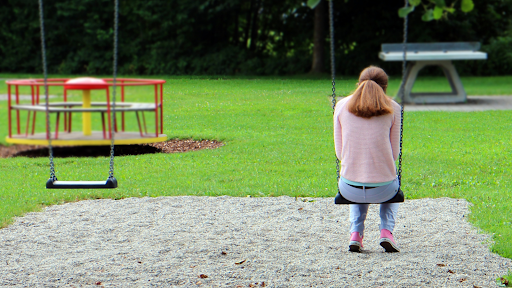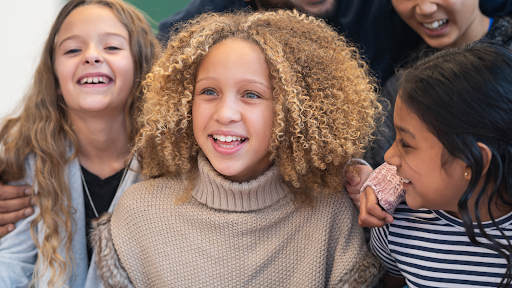Understanding the Social and Emotional Needs of Gifted Learners
If you are anything like I was a few years ago, you probably think of having gifted students within your room as a big win. After all, doesn’t every teacher want their students to exceed grade-level expectations, think critically, and creatively approach problems? Don’t get me wrong, giftedness IS what we call it: a gift. However, it also comes with its own set of challenges.
In 1985, educational researcher Judy Galbraith identified the “Eight Great Gripes” of gifted students. She found that while gifted children are more mature in some areas than their peers, they may be at a greater risk for some social-emotional difficulties. In fact, it is not uncommon for gifted students to experience anxiety, perfectionism, difficulties within peer relationships, and self-identity issues. “Why?” you may ask. Some gifted learners develop on a trajectory outside of norms or experience asynchronous development (Gulibault & Kane, 2017).
This might look like:
- A five-year-old who can read and write at a ninth-grade level, but still has the emotional maturity of a three-year-old
- A nine-year-old who can understand and deeply empathize with the racial injustices occurring around them, but does not know how to process or communicate what he is feeling
- A twelve-year-old who might need the challenge of college-level math courses, but greatly struggles to make friends
Unfortunately, having advanced levels of achievement or ability in some areas but not others can be frustrating and confusing for gifted children. Now perhaps more than ever as we continue to teach through a pandemic, we must find ways to empower our students and help them thrive.

Strategies to Meet Students’ Emotional Needs
Many gifted students struggle to some extent with perfectionism, anxiety, or depression. Navigating students’ emotional needs is one of the most challenging aspects of my job as a gifted educator.
In all honesty, after some days of teaching, I feel like crawling into a ball. Most of the time, it’s not because of endless to-do lists (while we all have those), but rather because of the weight of the challenges my students face both at home and in school. I’ve had elementary schoolers confide in me about wanting to hurt themselves, grieve the loss of loved ones as a result of crime and violence, and grapple with anger as they observe and experience inequalities in the world around them.
As teachers, it can be easy to view our sole responsibility as to instruct students academically. But I believe that at times, what students need most from us is a listening ear. Sometimes we need to abandon our lesson plans and simply create a safe space for kids to talk.

The Think Space
If you don’t have one already, create a designated space in your classroom for students to calm down, be themselves, and process their feelings and emotions. In my classroom, students know this space as a section of the room called “the think space: a safe place to be myself and take care of me.” Providing students time to calm down, breathe, and reflect on what has happened and why it has happened can go a long way in helping them feel safe and ready to learn.
I have found that setting a timer, providing students with tools such as fidgets or breathing exercises, and then engaging 1:1 with students after they have had time on their own can help students feel that they can process their emotions. These strategies also help me as an educator understand where they are coming from.
Restorative Circles
Another strategy I have found to be effective is holding restorative circles. Restorative circles are just what they sound like: circle discussions around the carpet that allow teachers to get a temperature check on students’ emotional states and allow students to talk about non-academic topics in the classroom.
When I was a general education teacher, I held a restorative circle as part of morning meetings every day in my classroom. In my current role, I also utilize restorative circles to get to know my students’ interests, home lives, and social/emotional needs. I also use them to help students resolve conflicts or process current events. Check out Trackit Lights’ list of prompts and activities you can use with your students during a circle.
Self-Affirmation Notebooks
One way I seek to support students struggling with anxiety and depression is by creating positive self-affirmation notebooks. I give a notebook to the struggling student and prompt him to make a list of at least two things each day that he likes about himself. I then aim to check in with him once a week to keep him accountable for using the notebook, and I invite him to share if it’s been helpful.
Cultivating strong, loving relationships with every child in your classroom is challenging. Luckily, my colleague Catherine Baker gives some fantastic strategies in her article Strong Relationships in the Classroom: The Key to Culture and Growth.

Resources to Support Students Struggling with Perfectionism
A wise person once told me, “what is good for gifted students, is good for all students.” I teach by that very philosophy. To help students reframe their sense of self-efficacy, each year I start off the school year by talking about a term originally coined by Dr. Carol Dweck: “growth mindset”.
Growth Mindset is the belief that hard work and effort can lead to increased intelligence. Dr. Dweck found that when students believe they can get smarter or better at something, they put in more effort, and therefore they have increased achievement.
Teachers must challenge thinking in students like “I am not good at math” or “I am never going to get good grades.” Instead of seeing mistakes as failures, I encourage my students to see mistakes as opportunities for growing and learning. Many of my students need to be tenderly reminded that everyone makes mistakes.
Here are some resources and strategies to help you talk to your students about perfectionism.
- The Girl Who Never Made Mistakes by Gary Rubinstein and Mark Pett- In this book for elementary readers, the main character learns that not only is making mistakes normal but also that when we don’t put pressure on ourselves to be perfect, life can be a lot more fun.
- The Mojo Show– ClassDojo and Stanford’s PERTS Research Center developed five short videos that teach young learners that their brain is like a muscle. Students are reminded again and again that with hard work and diligence, they can achieve what they put their minds to.
- Practice Hypotheticals: Battling perfectionist thoughts takes practice. To help your students counter perfectionism, engage with them in discussions about hypothetical situations. Ask your students, “Even if the situation happens that you are fearing, will everything work out okay?” Help your students see that even if their greatest fears come true, they will have adults (like you) who will care for them and walk them through it.

Strategies for Coping with Identity Needs
Despite their success in school, many gifted students feel like they do not belong. Talk with your students about what it means to be gifted. Create space for them to share their frustrations and fears. While gifted students benefit from spending time with students with similar cognitive abilities, they also benefit from spending time with peers with similar interests (Gulibault & Kane, 2017). Create opportunities in your classroom for students to collaborate over nonacademic activities and express themselves.
Finally, engage with students in activities to reframe their perspectives. Rather than focusing on the challenges or “gripes” of being gifted, encourage your students to identify and celebrate benefits. Last year, my fifth graders collaborated together to identify 8 great benefits to being gifted. Simply giving students the chance to express their experiences in a positive way can be a powerful outlet and help students see that they truly belong.

Your Work Matters
In my opinion, the work we do as teachers to counsel students, teach social skills, and shape students’ self-identities is what is most important. After all, what students most remember is not what you taught them but how you made them feel. Fortunately, we aren’t alone in paving pathways for success for our students. Partnerships with school counselors, social workers, and families are instrumental in helping students thrive.
Remember, don’t shy away from difficult conversations. Create a curriculum that focuses on activism and tells history from the perspectives of historically marginalized communities. Expose your students to opportunities to help them process their perspectives and feelings. Learning for Justice provides high-quality lesson plans and teaching resources on topics to help you do this.
But, most importantly, don’t forget that what you do and say each day matters. Students need compassionate teachers and caregivers that help them know that they belong. In other words, they need YOU.
References
Byrd, I. (2019). The eight great gripes of gifted students. Byrdseed.
https://www.byrdseed.com/the-eight-great-gripes-of-gifted-students/
Galbraith, J. (1985, September). The eight great gripes of gifted kids: Responding to special needs.
Roeper Review, (8)(1) 15-18.
Gulibault, K., & Kane, M. (2017, October). Asynchronous Development.http://www.nagc.org/sites/default/files/Publication%20PHP/NAGC%20TIP%20Sheet-Asynchronous%20Development-FINAL%20RE ISED-OCTOBER%202017(1).pdf



